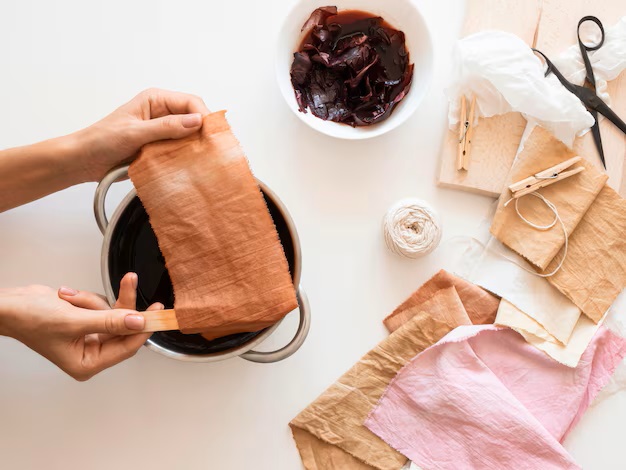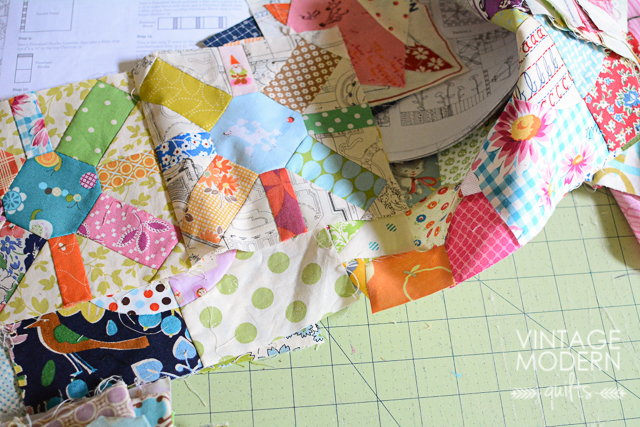Guide to Choosing and Using Cutting Mats for Quilting Projects
Opt for mats made from high-density PVC for durability and precision. These surfaces resist cutting marks and prolong the life of blades. Choose self-healing varieties, as they repair themselves after cuts, ensuring a smooth working area.
Consider size and thickness based on your workspace and projects. A large mat can accommodate bigger pieces, while a 3mm thickness provides adequate support without being cumbersome. Additionally, look for mats with printed grids and angles to aid in accurate measurements.
Evaluate portability features if you attend workshops or classes. Mats that roll up easily or have lightweight designs enhance convenience. Furthermore, prioritize mats with non-slip backings to maintain stability while working.
Be mindful of color choices; lighter colors can make fabric visibility easier, while darker colors may hide existing cuts. Finally, ensure compatibility with rotary cutters and rulers for best results. Making informed choices enhances the entire crafting experience.
Understanding Cutting Mat Materials and Their Benefits
Self-healing mats, made from layered PVC, are ideal for frequent use. Their unique structure allows cuts to close up after use, prolonging lifespan. Opt for a mat with a grid clearly marked for accurate measurements, aiding precise cutting.
Polyester mats, lighter and typically more affordable, offer a good surface for occasional crafters. While they may not provide the same durability as self-healing varieties, they are suitable for basic tasks.
Thickness and Size Considerations
Thickness plays a role in performance. A 5 mm thickness provides sturdiness for heavier cutting tools, while thinner options around 3 mm work for lightweight tasks. Also, choose size appropriate for your workspace; larger mats support bigger fabric pieces, enabling efficient cutting.
Surface Texture and Grip
A textured surface can enhance grip, preventing slipping during cutting. Mats with a fine texture offer stability for detailed work, while smoother surfaces allow easy gliding of cutting tools. Select based on your cutting style and tool preferences.
Determining the Ideal Mat Thickness for Your Needs
Opt for a mat thickness of 3mm for general use, providing a balance between stability and cutting precision. This thickness works well for standard rotary cutters and everyday fabrics.
If working with thicker materials such as multiple layers or batting, consider a 5mm mat. This offers added cushioning, preserving blade sharpness and extending longevity.
- Thin mats (1-2mm): Suitable for light fabrics and intricate cutting.
- Medium mats (3-4mm): Versatile choice for a wide range of materials.
- Heavy-duty mats (5mm+): Best for robust, layered projects.
Always assess the type of cutter being used; thicker mats may dull blades faster if not suitable for the intended application. Regularly replace mats that show signs of wear, especially if grooves begin to affect cutting accuracy.
Your specific projects will dictate the most beneficial thickness–plan accordingly to ensure optimal results and maintain tool performance.
Choosing the Right Size of Cutting Mat for Your Workspace
Opt for a mat that fits comfortably within your designated area, allowing for ample movement while working. A 24″ x 36″ mat suits most sewing tables, providing balance between space and usability. If your workspace is limited, consider a smaller option like 18″ x 24″, which retains versatility without overwhelming your surface.
Assess the types of projects you typically undertake. Larger designs may require expansive mats, such as 36″ x 60″, to accommodate full-size fabric pieces. For smaller patchwork crafts, a more compact surface suffices, ensuring clean cuts without excessive shifting.
Evaluate your storage possibilities. If space is tight, prioritize mats that are easily transportable or foldable. This flexibility allows for storage in drawers or closets, preventing clutter and maintaining organization in your crafting area.
Consider the thickness of the mat as well. A thicker option provides durability and stability, essential for handling rotary cutters. Look for mats at least 3mm thick to ensure longevity and consistent performance with heavy-duty use.
Finally, align your mat size with personal comfort. Stand-up work may benefit from larger surfaces, while seated tasks could be accomplished with smaller dimensions. Keep your preferences and physical space in focus to enhance both productivity and enjoyment in your creative endeavors.
Exploring Surface Grid Lines and Measurement Accuracy
Opt for mats featuring precise surface grid lines that enhance measurement accuracy. Look for markings in both inch and metric units to accommodate various projects. A clearly defined grid aids in aligning fabric pieces correctly, minimizing waste and errors.
Features to Consider
| Feature | Benefit |
|---|---|
| Double-Sided Grids | Offers versatility for different fabric types and sizes. |
| Highlighted Lines | Easier visibility under different lighting, reducing strain. |
| Durable Materials | Ensures long-lasting use without distortion of grid patterns. |
Consistent measurement across your workspace guarantees squared corners and straight edges. Choose mats designed with grid spacing that matches common fabric widths, such as 1″, 2″, or 3″. This alignment simplifies cutting strips and patches, enhancing workflow.
Maintenance Tips
Keep grid lines sharp by regularly cleaning the mat with a mild soap solution and soft cloth. Avoid using abrasive materials that can cause permanent damage to the markings. Store mats flat or rolled to prevent warping, which can affect accuracy.
Protecting Your Tools: Key Features to Look For
Select a mat with a self-healing surface. This feature significantly reduces cutting marks, extending the mat’s life and maintaining a smooth area for your tools.
Look for clear, printed grid lines. Precise markings help align fabric accurately, ensuring cuts are even and minimizing material waste.
Consider thickness. A mat with at least 3mm to 5mm thickness provides stability while accommodating various blade types, preventing damages to your tools.
A dual-sided design offers versatility. One side may feature a grid, while the other can be used for larger projects or different measurements.
Examine the material composition. Mats made from PVC or polypropylene resist wear and tear, protecting both the mat and cutting instruments from damage.
Portability is valuable. Lightweight materials allow easy transport, making it more convenient to work in different locations without sacrificing quality.
Choose a mat that is compatible with rotary cutters. Ensuring compatibility helps maintain sharp blades and enhances the cutting experience.
Evaluate durability ratings. High-quality mats should withstand years of use, ensuring tools remain sharp and functional over time.
Maintaining Your Cutting Mat for Longevity and Performance
Regular cleaning of the surface is paramount. Use a damp cloth with mild soap to remove fabric dust, threads, and debris. Avoid strong chemicals that could damage the material.
Store horizontally to prevent warping. Placing weights or other materials on top can help maintain flatness during storage.
Rotate usage frequently. By shifting the mat during projects, wear is evenly distributed, prolonging its lifespan.
Use a rotary cutter with a sharp blade. Dull blades create excess pressure, leading to deeper grooves and faster deterioration.
Periodically check for deep cuts or damage. If significant wear occurs, consider repairing with a self-healing mat or replacing it entirely to maintain precision while cutting.
Keep in a temperature-controlled environment. Extreme heat or cold may negatively impact material integrity and functionality.
Handle with clean hands to prevent transfer of oils or residues that may adhere to the surface.
For marks or stains, use a gentle abrasive sponge or a specialty mat cleaner designed specifically for this purpose.
Apply a light coat of mineral oil occasionally to condition the surface and prevent drying out. This can enhance performance and appearance over time.
Q&A: Cutting mats for quilting
How does a self-healing cutting mat protect your work surface during rotary cutting and fabric cutting tasks?
A self-healing cutting mat is designed to absorb the blade’s impact without creating permanent grooves, allowing it to “heal” itself after each cut. This feature helps protect your work surface during rotary cutting and sewing projects by preventing damage from repeated cuts. It also ensures smooth blade movement and extends the life of both the mat and your rotary blades, making it a vital tool for quilters and sewists.
Why do many quilters prefer a large cutting mat, such as 24 x 36, for quilting and sewing projects?
A large cutting mat offers ample cutting area and grid markings for accurate measuring, making it easier to cut full-width quilting fabric and large quilt blocks. Quilters working on bigger projects benefit from the extended work surface and reduced need to reposition fabric. Large cutting mats like those from OLFA or Martelli also fit well on a dedicated cutting table, enhancing efficiency and precision.
What are the advantages of using a rotating cutting mat or rotating cutting surface for detailed quilt cutting tasks?
A rotating cutting mat allows quilters to turn their work without shifting the fabric, which is ideal for trimming half-square triangles or small blocks. This improves accuracy and safety when using rotary cutting tools. Rotating mats come in sizes like 12 x 12 or 14 x 14 and are especially helpful when working in limited sewing space or when a smaller mat is needed for portable or tabletop use.
How can proper care and storage of your self-healing cutting mat help extend the life of your quilting tools?
To extend the life of your cutting mat, it’s important to store your mat flat and out of direct sunlight or heat, which can warp the surface. Regularly rotating use areas on the mat during cutting fabric prevents excessive wear in one spot. Keeping your mat clean, using the right cutting pressure, and pairing it with sharp rotary blades helps preserve the mat’s self-healing properties and maintain a high-quality cutting surface.
Why do many quilters consider a rotary cutting mat with self healing properties the best cutting mat for sewing cutting and craft cutting?
A rotary cutting mat with self healing properties closes up minor cuts from rotary blades, maintaining a smooth surface for precise sewing cutting and craft cutting. These mats reduce wear on blades and provide long-term durability, which is why quilters often rank them among the best cutting mats on the market for both accuracy and tool longevity.
What features make an OLFA mat or Creative Grids rotary mat ideal for a quilter looking for the best cutting experience?
OLFA mats and Creative Grids rotary mats are known for their high-quality self healing surfaces and clearly marked grid lines. Quilters appreciate these mats for their durability, accurate measurements, and smooth rotary cutting performance. Whether you’re working on a small project or need a full sewing mat, these brands consistently offer some of the best cutting mat options available.
How does a reversible sewing mat benefit quilters who use their quilting cutting mat frequently?
A reversible sewing mat provides two usable surfaces, allowing the quilter to flip the mat for extended life and consistent performance. This is especially helpful during intense quilting or craft cutting sessions, as it distributes wear evenly across both sides. Many reversible mats are also self healing, offering double the usability without compromising on quality.
Why is an 18 x 24 rotary mat a popular choice for quilters buying a new cutting mat?
An 18 x 24 rotary mat offers a practical balance of size and portability, making it ideal for quilters working in small spaces or moving between sewing areas. It fits comfortably on most tables while still providing ample surface for cutting fabric. As a new mat, it’s a reliable go-to size that suits both beginners and experienced quilters looking for the best cutting mat for everyday use.


